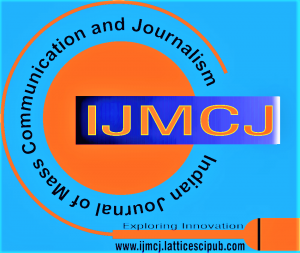Information Security and Cryptography-Encryption in Journalism
Rajeev Ranjan Sahay
Rajeev Ranjan Sahay, Department of Mass Communication and Journalism, Uttaranchal University, Dehradun (Uttarakhand), India.
Manuscript received on 18 July 2023 | Revised Manuscript received on 02 August 2023 | Manuscript Accepted on 15 September 2023 | Manuscript published on 30 September 2023 | PP: 1-16 | Volume-3 Issue-1, September 2023 | Retrieval Number: 100.1/ijmcj.A1047093123 | DOI:10.54105/ijmcj.A1047.093123
Open Access | Editorial and Publishing Policies | Cite | Zenodo | Indexing and Abstracting
© The Authors. Published by Lattice Science Publication (LSP). This is an open-access article under the CC-BY-NC-ND license (http://creativecommons.org/licenses/by-nc-nd/4.0/)
Abstract: The purpose of this review paper is to garner knowledge about the information security and cryptography encryption practices implementation for journalistic work and its effectiveness in thwarting software security breaches in the wake of ‘Journalism After Snowden’. Systematic literature review for the ‘information security and cryptography encryption in journalism’ employed with an eye to synthesize existing practices in this field. For this, at first the existing approachable research article databases and search engines employed to download or get the abstract of relevant scientific articles which are then used for citation and summarization works in a systematic rigorous anatomization. Contingent upon them their analysis and synthesis employed to arrive at the findings. Research papers collated for the purpose of writing this review paper lighted up the vital issues related to investigative journalists’ safety practices promulgation inadequacies even after the UNESCO 2017 and 2022 guidelines for urgent instrumentalization needs of journalists on the part of its’ member States.
Keywords: Information Security, Quantum Homomorphic Encryption, Encryption, Edward Snowden, Surveillance, Investigative Journalism.
Scope of the Article: Journalism
